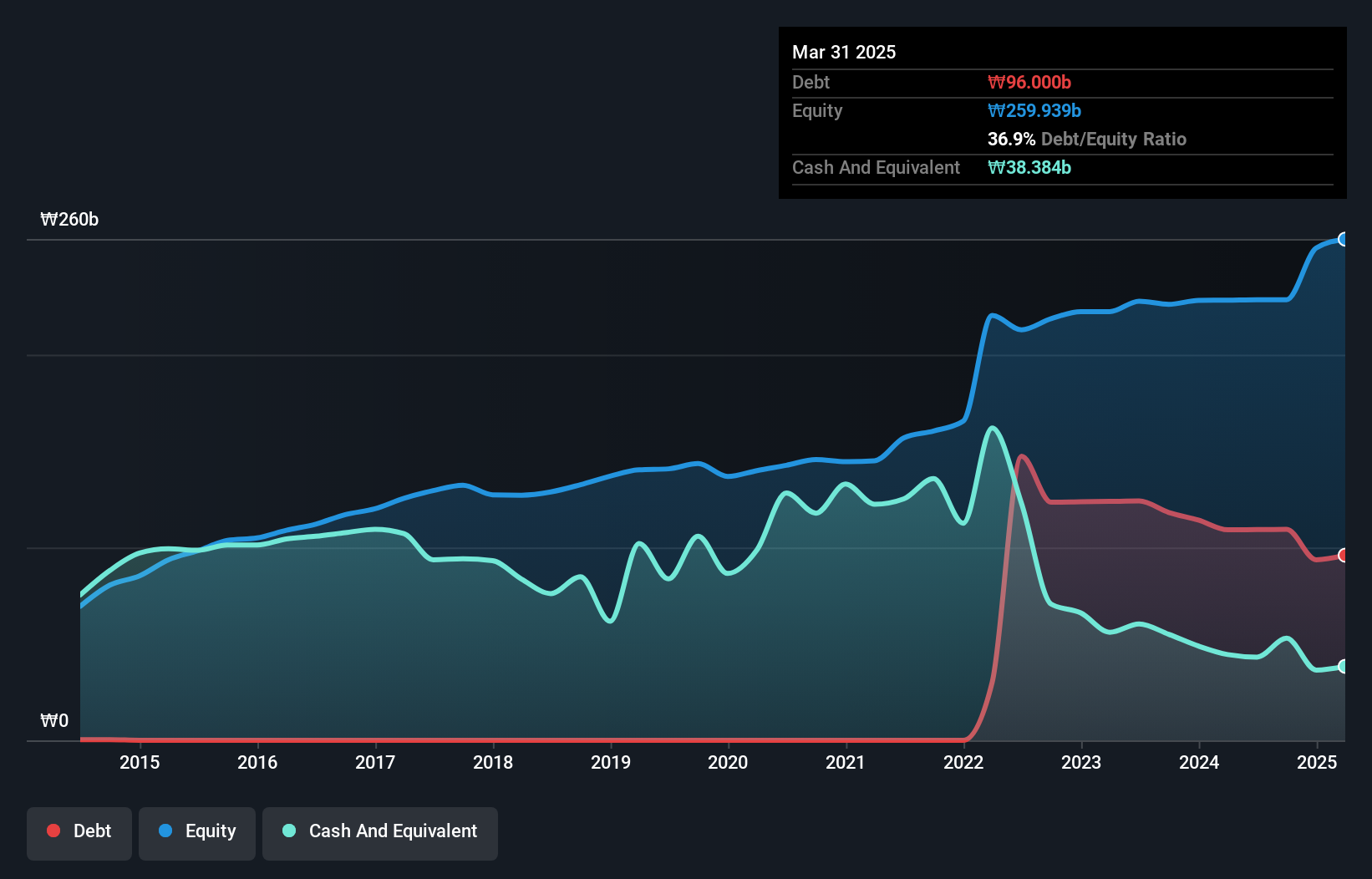- South Korea
- /
- Entertainment
- /
- KOSDAQ:A123420
Does Wemade Play (KOSDAQ:123420) Have A Healthy Balance Sheet?
Some say volatility, rather than debt, is the best way to think about risk as an investor, but Warren Buffett famously said that 'Volatility is far from synonymous with risk.' So it seems the smart money knows that debt - which is usually involved in bankruptcies - is a very important factor, when you assess how risky a company is. Importantly, Wemade Play Co., Ltd. (KOSDAQ:123420) does carry debt. But the more important question is: how much risk is that debt creating?
When Is Debt A Problem?
Debt is a tool to help businesses grow, but if a business is incapable of paying off its lenders, then it exists at their mercy. Part and parcel of capitalism is the process of 'creative destruction' where failed businesses are mercilessly liquidated by their bankers. While that is not too common, we often do see indebted companies permanently diluting shareholders because lenders force them to raise capital at a distressed price. Of course, debt can be an important tool in businesses, particularly capital heavy businesses. The first thing to do when considering how much debt a business uses is to look at its cash and debt together.
What Is Wemade Play's Debt?
As you can see below, Wemade Play had ₩96.0b of debt at March 2025, down from ₩109.2b a year prior. However, it also had ₩38.4b in cash, and so its net debt is ₩57.6b.

A Look At Wemade Play's Liabilities
We can see from the most recent balance sheet that Wemade Play had liabilities of ₩19.0b falling due within a year, and liabilities of ₩130.7b due beyond that. On the other hand, it had cash of ₩38.4b and ₩11.8b worth of receivables due within a year. So its liabilities outweigh the sum of its cash and (near-term) receivables by ₩99.6b.
This deficit is considerable relative to its market capitalization of ₩106.4b, so it does suggest shareholders should keep an eye on Wemade Play's use of debt. Should its lenders demand that it shore up the balance sheet, shareholders would likely face severe dilution.
Check out our latest analysis for Wemade Play
In order to size up a company's debt relative to its earnings, we calculate its net debt divided by its earnings before interest, tax, depreciation, and amortization (EBITDA) and its earnings before interest and tax (EBIT) divided by its interest expense (its interest cover). Thus we consider debt relative to earnings both with and without depreciation and amortization expenses.
As it happens Wemade Play has a fairly concerning net debt to EBITDA ratio of 5.1 but very strong interest coverage of 1k. So either it has access to very cheap long term debt or that interest expense is going to grow! Notably, Wemade Play made a loss at the EBIT level, last year, but improved that to positive EBIT of ₩3.1b in the last twelve months. The balance sheet is clearly the area to focus on when you are analysing debt. But it is Wemade Play's earnings that will influence how the balance sheet holds up in the future. So when considering debt, it's definitely worth looking at the earnings trend. Click here for an interactive snapshot.
But our final consideration is also important, because a company cannot pay debt with paper profits; it needs cold hard cash. So it is important to check how much of its earnings before interest and tax (EBIT) converts to actual free cash flow. Over the last year, Wemade Play actually produced more free cash flow than EBIT. There's nothing better than incoming cash when it comes to staying in your lenders' good graces.
Our View
Both Wemade Play's ability to to cover its interest expense with its EBIT and its conversion of EBIT to free cash flow gave us comfort that it can handle its debt. In contrast, our confidence was undermined by its apparent struggle handle its debt, based on its EBITDA,. When we consider all the factors mentioned above, we do feel a bit cautious about Wemade Play's use of debt. While debt does have its upside in higher potential returns, we think shareholders should definitely consider how debt levels might make the stock more risky. There's no doubt that we learn most about debt from the balance sheet. However, not all investment risk resides within the balance sheet - far from it. These risks can be hard to spot. Every company has them, and we've spotted 4 warning signs for Wemade Play (of which 1 can't be ignored!) you should know about.
When all is said and done, sometimes its easier to focus on companies that don't even need debt. Readers can access a list of growth stocks with zero net debt 100% free, right now.
Valuation is complex, but we're here to simplify it.
Discover if Wemade Play might be undervalued or overvalued with our detailed analysis, featuring fair value estimates, potential risks, dividends, insider trades, and its financial condition.
Access Free AnalysisHave feedback on this article? Concerned about the content? Get in touch with us directly. Alternatively, email editorial-team (at) simplywallst.com.
This article by Simply Wall St is general in nature. We provide commentary based on historical data and analyst forecasts only using an unbiased methodology and our articles are not intended to be financial advice. It does not constitute a recommendation to buy or sell any stock, and does not take account of your objectives, or your financial situation. We aim to bring you long-term focused analysis driven by fundamental data. Note that our analysis may not factor in the latest price-sensitive company announcements or qualitative material. Simply Wall St has no position in any stocks mentioned.
About KOSDAQ:A123420
Flawless balance sheet and good value.
Market Insights
Community Narratives



